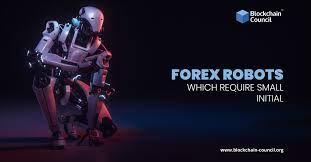In the fast-paced world of foreign exchange (forex) trading, staying ahead of the curve can be the difference between success and failure. With the advent of technology, traders have been presented with innovative tools to enhance their strategies and streamline their operations. One such tool that has gained significant traction in recent years is the forex robot.
Forex robots, also known as expert advisors (EAs), are automated trading systems designed to execute trades on behalf of traders based on predefined algorithms and parameters. These robots operate within the framework of the MetaTrader platform, one of the most popular trading platforms in the forex market.
The allure of forex robots lies in their ability to eliminate emotional bias from trading decisions and execute trades with precision and speed. Emotions such as fear and greed often cloud traders’ judgment, leading to impulsive decisions that can result in significant losses. By delegating trading tasks to a robot, traders can adhere strictly to their predetermined strategies without succumbing to emotional impulses.
The functionality of forex robots varies depending on their design and the strategies they employ. Some robots are programmed to execute trades based on technical indicators such as moving averages, RSI (Relative Strength Index), and MACD (Moving Average Convergence Divergence), while others utilize fundamental analysis or a combination of both.
One of the key advantages of forex robots is their ability to operate 24/7 without the need for constant supervision. Unlike human traders who need rest, robots can tirelessly monitor the market, identify trading opportunities, and execute trades even in the absence of their users. This round-the-clock operation ensures that traders never miss out on lucrative opportunities that may arise during off-hours or when they are otherwise occupied.
Additionally, forex robots can backtest trading strategies using historical data to assess their effectiveness and optimize parameters for better performance. This allows traders to refine their strategies and improve their chances of success before deploying them in live trading environments.
However, despite their potential benefits, forex robots are not without their limitations and risks. One of the primary challenges faced by users is the selection of a reliable and effective robot amidst a sea of options available in the market. Not all robots are created equal, and some may lack robustness or fail to deliver consistent results over the long term.
Furthermore, forex robots are not immune to market volatility and unforeseen events that can disrupt their performance. Sudden price fluctuations, geopolitical developments, and economic announcements can all impact the efficacy of trading algorithms and lead to unexpected losses.
Moreover, the over-reliance on forex robots without a thorough understanding of market dynamics and trading principles can be detrimental. While automation can enhance efficiency, it should complement rather than replace human judgment and decision-making. Traders must remain vigilant and exercise discretion when deploying forex robots to ensure they align with their overall trading objectives and risk tolerance.
In conclusion, forex robots represent a powerful tool for traders seeking to automate their trading processes and capitalize on market opportunities. By leveraging advanced algorithms and technology, these robots can execute trades with precision and efficiency, minimizing human error and emotional bias. However, traders must exercise caution and due diligence in selecting and deploying forex robots to mitigate risks and maximize their chances of success in the dynamic world of forex trading.
